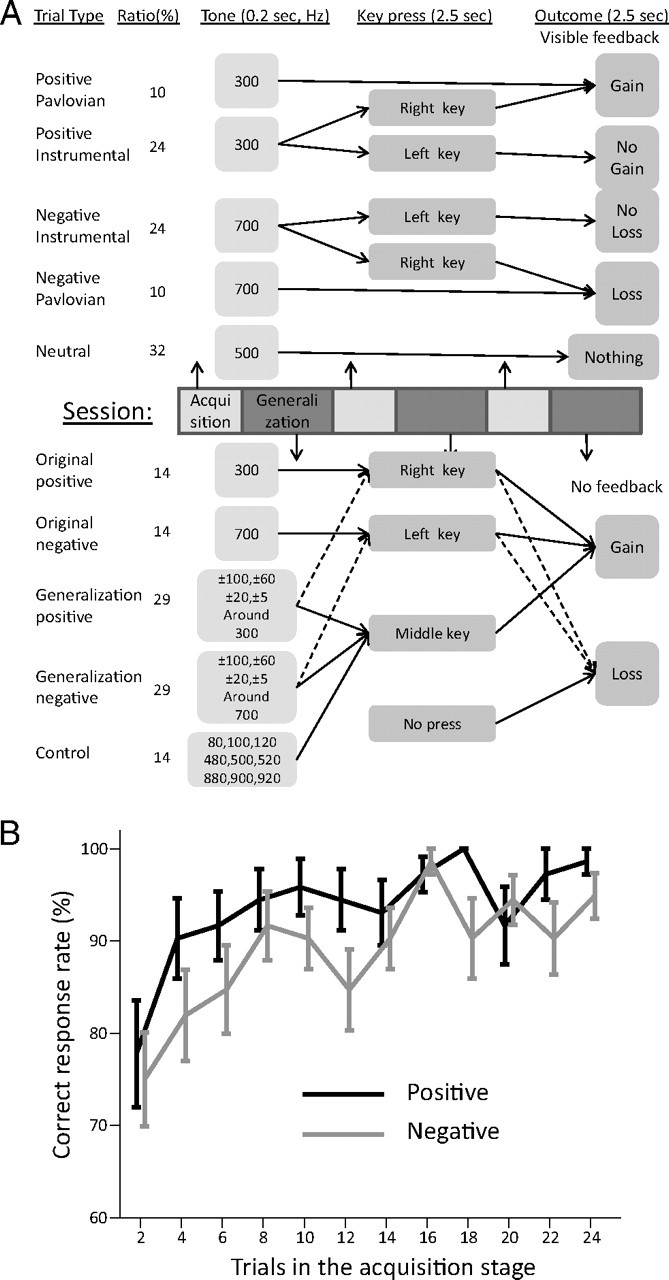Figure 1.

Behavioral paradigm. A, Subjects learned by trial-and-error which of two pure tones (300/700 Hz) can result in gain (if followed by a press on one of two keys, e.g., the “left” key) and which can result in loss (if not followed by a press on the other key, e.g., the “right” key). They could use this acquired information to gain more funds, but we introduced new tones in addition; some were completely different from the positive and negative tones (e.g., 100, 500, 900 Hz), and some were in distances of [−100, −60, −20, −5, +5, +20, +60, +100] Hz around the positive and negative tones. Subjects were instructed to press the same key as in the acquisition stage if the tone heard matched exactly either the positive or the negative tone, and a third middle key if it did not match either two. Notice that in this stage, the potential outcomes are identical for all tones: subjects would gain more money for a correct press, i.e., either if after hearing a positive or negative tone, they pressed the original key that was associated with it; or if after hearing a tone that was different from the positive/negative tones, they would press the middle key. They would lose an equal amount of money for any type of error, i.e., either for pressing one of the original keys for a tone that is not one of the positive or negative tones, or for pressing the middle key when it was one of the positive or negative tones. The dashed lines in the generalization stage are the main concern of this paper: how much the subjects mistake a tone for the original tone, although they lose money for it. B, Correct response rate for both positive and negative reinforcement in the acquisition stage. Shown are the raw response rates in windows of two trials averaged over subjects. There was significant above chance-level performance already in the first 2 trials (p < 0.01, χ2) which improved fast further (p < 0.01, ANOVA) and reached plateau already at the ∼6 trial (p > 0.1, post hoc t tests). Thus, subjects learned to discriminate between the 300 and 700 Hz tones and associate them with the correct key press.
